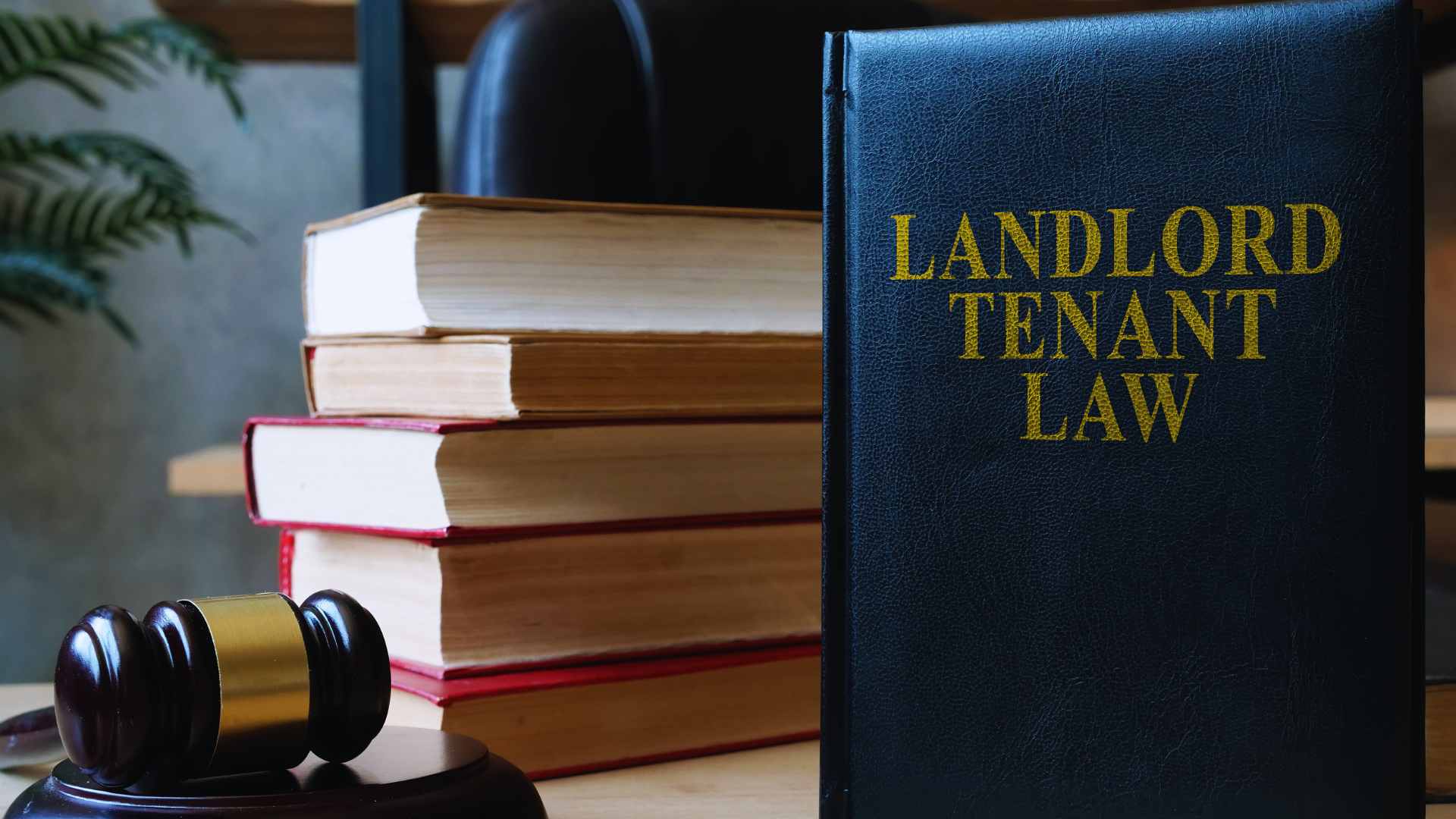Eviction laws are critical for landlords to navigate, as they define the legal process and ensure compliance when dealing with tenant issues. Understanding these laws helps landlords protect their rights while also respecting tenant protections. Failure to adhere to eviction regulations can lead to costly legal battles and complications.
Landlords must familiarize themselves with state-specific eviction processes, notice requirements, and tenant rights. Knowing when and how to initiate an eviction can make a significant difference in maintaining a profitable rental property. Staying informed about changes in eviction laws is essential for effective property management.
Being proactive and knowledgeable about eviction laws not only safeguards a landlord’s assets but also fosters a professional relationship with tenants. This understanding can facilitate smoother resolutions and minimize disputes, ultimately leading to better property management outcomes.
Understanding the Eviction Process
The eviction process involves multiple legal steps and requirements that landlords must follow to effectively remove a tenant. Familiarity with different types of notices and the subsequent court procedures is crucial to ensure compliance with local laws.
Overview of Legal Eviction Procedures
Legal eviction procedures begin when a landlord decides to terminate a tenant’s occupancy. Landlords must follow specific steps to avoid legal complications.
Generally, the process can be broken down into three main phases:
- Issuing an Eviction Notice: This is often the first formal step. It informs the tenant of lease violations or the need to vacate.
- Filing an Eviction Lawsuit: If the tenant does not respond to the notice, the landlord may proceed to file court papers to initiate legal action.
- Court Proceedings: A judge hears the case, and if the landlord wins, a judgment is issued for the tenant to vacate.
Understanding these phases is essential for landlords to navigate the eviction process legally.
Eviction Notice Types and Their Purposes
There are several eviction notice types, each serving distinct purposes depending on the situation:
- Pay Rent or Quit Notice: Used when a tenant fails to pay rent, allowing them a specific period to pay or vacate.
- Cure or Quit Notice: This notice addresses lease violations, giving the tenant a chance to correct the issue or move out.
- Unconditional Quit Notice: This request demands that the tenant vacate immediately, typically used for severe lease violations.
Each notice must be written clearly, include important details such as the amount owed or the violation specifics, and adhere to local regulations.
Key Steps in an Eviction Lawsuit
Once a landlord issues an eviction notice, the next steps include preparing for a potential lawsuit:
- Filing Court Papers: Landlords must file the eviction lawsuit with appropriate documentation, including proof of the notice served to the tenant.
- Court Hearing: Both parties present their case. The landlord must provide evidence supporting the eviction claim. This may include lease agreements, payment records, and the eviction notice.
- Judgment: If the court rules in favor of the landlord, a judgment is issued. This allows the landlord to proceed with eviction, typically involving local authorities to handle the removal if necessary.
Understanding these steps ensures landlords approach eviction lawsuits prepared and compliant with legal standards.
Eviction Notices and Lease Violations
Understanding eviction notices and how they relate to lease violations is critical for landlords. These notices serve as formal communication to tenants, outlining the specific issues leading to potential eviction. The type of notice issued often depends on the nature of the violation.
Nonpayment of Rent and Cure or Quit Notices
For nonpayment of rent, landlords typically issue a cure or quit notice. This document gives tenants a specific timeframe to pay the overdue rent or vacate the property. In many jurisdictions, landlords must provide at least a three to five-day notice, although regulations vary.
If the tenant fails to comply within the designated period, the landlord may proceed with eviction proceedings. This notice must contain clear information regarding the amount due, any late fees, and the timeframe for action.
Unconditional Quit and Pay Rent or Quit Notices
An unconditional quit notice demands that tenants vacate the premises without offering a chance to rectify the situation. This type of notice is usually issued for serious lease violations, including repeated nonpayment of rent or property damage.
Conversely, a pay rent or quit notice allows tenants to pay overdue rent or face eviction. Landlords must follow state laws regarding the notice period, which is often seven to fourteen days.
Both notice types should clearly state the reasons for eviction and any relevant deadlines, ensuring tenants are fully aware of their obligations.
Handling Lease Violations and Reasonable Timeframes
When addressing lease violations, landlords must act within reasonable timeframes as dictated by local laws. Common lease violations include unauthorized pets, excessive noise, or property damage.
Landlords typically issue a notice outlining the specific violation and a timeframe for correction, commonly between 7 to 30 days. Providing clear expectations helps tenants understand what is required to resolve the issue.
If tenants fail to remedy the violation within the given period, landlords may initiate eviction proceedings. Documentation of all communications related to lease violations is essential for legal protection.
Legal Considerations for Landlords
Landlords must navigate various legal considerations to ensure compliance and protect their interests. Understanding laws related to fair housing, retaliation, occupancy limits, and the roles of property managers is essential for successful property management.
Fair Housing Act Compliance
The Fair Housing Act prohibits discrimination in housing based on race, color, national origin, religion, sex, familial status, or disability. Landlords must ensure that their rental applications, advertisements, and lease agreements adhere to these guidelines.
Key Points:
- Landlords cannot refuse tenancy based on protected classes.
- Advertisements should avoid language that could imply discrimination.
Training staff on these requirements can mitigate risks. Violations can lead to legal actions and damages, so understanding this law is crucial for every landlord.
Retaliation and Defenses to Eviction
Landlords must be aware that retaliatory evictions can be illegal. If tenants exercise their rights, such as filing complaints about unsafe living conditions, landlords may not evict them in response.
Important Aspects:
- Documentation is key. Landlords should keep detailed records of tenant communications and complaints.
- Tenants may have defenses against eviction if the action is deemed retaliatory.
Fostering open communication can prevent misunderstandings and reduce the likelihood of retaliatory claims.
Occupancy Limits and Quiet Enjoyment
Occupancy limits dictate the maximum number of occupants in a rental unit, often defined by local housing codes. Landlords must respect these limits to avoid overcrowding issues.
Considerations:
- Overcrowding can lead to health and safety violations.
- Quiet enjoyment is a tenant’s right to live without disturbances. Landlords must address noise complaints efficiently.
Balancing these factors is key for maintaining tenant satisfaction and compliance with local laws.
Role of Property Managers
Property managers serve as intermediaries between landlords and tenants. They handle day-to-day operations, including leasing, maintenance requests, and conflict resolution.
Responsibilities:
- Ensure compliance with eviction laws and tenant rights.
- Screen potential tenants carefully to avoid discrimination.
Effective property management can reduce legal risks and help landlords maintain positive relationships with tenants.
Practical Guidance and Best Practices
Landlords should adhere to specific practices to navigate the eviction process effectively. Proper documentation and understanding of legal requirements can minimize liabilities and streamline procedures. This section covers crucial aspects, including documentation, security deposits, serving notices, and trial procedures.
Documenting the Eviction Process
Accurate documentation is essential in the eviction process. Landlords must keep detailed records, including lease agreements, payment histories, and communication logs. This documentation serves as vital evidence if the eviction goes to court.
Key documents include:
- Lease agreement
- Notices sent to the tenant
- Records of payment issues
In Florida, maintaining a timeline of events can also help demonstrate the landlord’s compliance with state laws. Proper record-keeping aids in justifying actions taken against a tenant while protecting against potential claims of unlawful eviction.
Security Deposits and Constructive Eviction
Understanding security deposits is crucial for landlords. Florida law requires landlords to return security deposits within 15 days if there are no deductions. Failure to do so may result in legal complications.
Constructive eviction occurs when a landlord fails to maintain habitable conditions, pushing a tenant to leave. If this situation arises, the landlord may be held liable.
Landlords must ensure:
- The property meets safety and health codes.
- Repairs are made promptly to avoid claims of constructive eviction.
Maintaining clear communication with tenants about property conditions can also help mitigate disputes regarding security deposits and eviction claims.
Serving Notices with Certified Mail
Serving eviction notices through certified mail provides a verifiable way to inform tenants. This method creates a paper trail, confirming the tenant received the notice.
Landlords should:
- Use certified mail for all eviction-related notices.
- Keep receipts and tracking information.
In Florida, providing proper notice is critical. Typically, a three-day or seven-day notice is required, depending on the circumstances. Properly serving notices reduces the likelihood of disputes in court regarding whether the tenant was informed of the eviction.
Understanding Default Judgment and Trial Procedures
Landlords should be aware of default judgment rules. If a tenant fails to respond to an eviction lawsuit, a default judgment may be issued in favor of the landlord. This simplifies the process for landlords.
Important steps in this stage include:
- Filing a complaint with the court.
- Attending the hearing if the tenant contests the eviction.
Familiarity with trial procedures ensures landlords can navigate the court system efficiently. Documents must be prepared, witnesses subpoenaed, and evidence presented clearly to support the case in court. Understanding these processes is vital for successful eviction outcomes.







